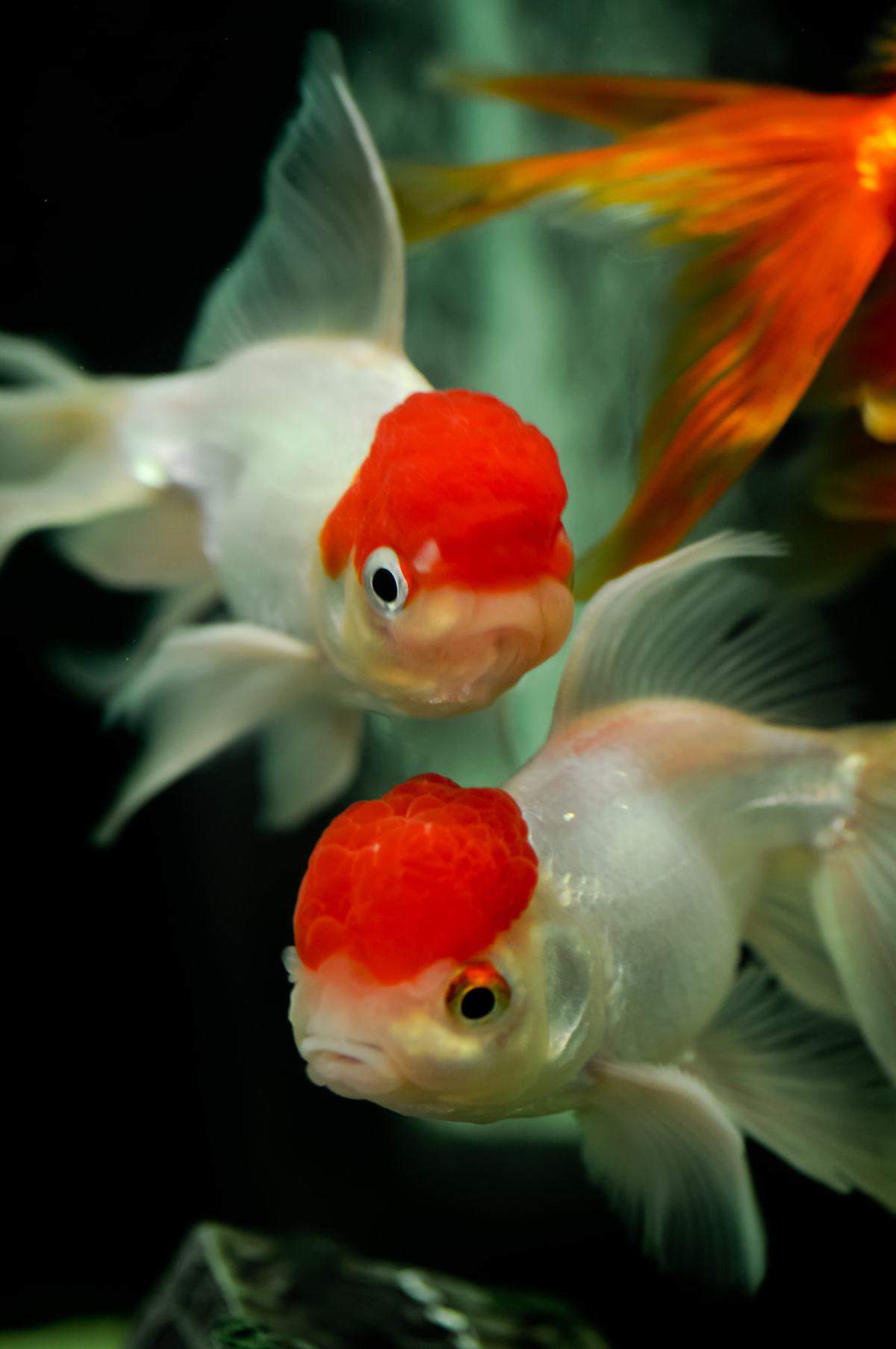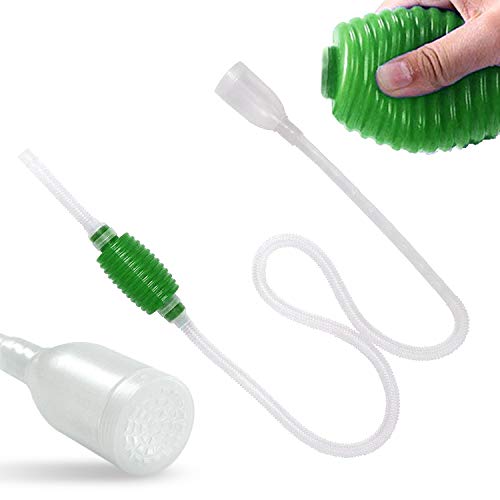Most hobbyists began their lifelong fishkeeping obsession as kids with a pet goldfish.
But, those goldfish were most likely a comet, or common, goldfish rather than one of the more exotic fancy varieties. These types of goldfish are relatively easy to keep, which makes them good beginner fish, and can be relocated to a garden pond if they outgrow their tanks.
However, if you’re looking for something more unusual, you might want to consider the redcap oranda fancy goldfish. Read on to learn more about this weird-looking but friendly fish, including how to care for them and where they came from.
What is a redcap oranda goldfish?
There are several varieties of oranda fancy goldfish, of which the redcap oranda (Carassius auratus auratus) is probably the most popular.
Orandas are extremely popular in Japan, where they’re known as Oranda Shishigashiri or Azuma Nishiki, which is a calico variety. The fish are also commonly called tigerheads or tiger goldfish.
What do redcap oranda goldfish look like?
Redcap orandas are round-bodied fancy goldfish.
The redcap oranda’s body is covered with large, round, pure white scales that can be either matte or metallic, and these fish have a long, split caudal fin that flows into a beautiful fan shape as they hang in the water.
Thanks to the tail, these orandas are aptly nicknamed “flowers of the water.” The fish’s other fins, except the dorsal, are paired and symmetrical.
All oranda goldfish have a characteristic fleshy head growth, or wen. The wen appears when the fish is three to four months old, becoming fully developed once it’s about one or two years of age but continuing to grow for another year or so after that. The redcap oranda takes its name from the cherry red wen that looks just like a cap and is the only pop of color on the fish, which is otherwise totally wise.
Male or female? How to determine gender
If you want to breed your redcap orandas, you’ll need to be sure you have a mix of males and females. So, how do you separate the girls from the boys?
That’s a difficult question, as both sexes look pretty similar until the breeding season comes around. When in breeding condition, the male develops a scattering of white tubercles or breeding stars across his gill covers and head. If viewed from above, the female redcap oranda appears plumper than the male if she is carrying eggs.
How big do redcap orandas grow?

Recap orandas typically grow to between six to seven inches long when fully grown. However, some individuals will grow much larger, depending on the fish’s genetic makeup, diet, and general care.
If kept in a pond or very large tank, expect a much larger fish size than if it was kept in a small aquarium.
How long do redcap orandas live for?
Redcap oranda goldfish have a life expectancy of between ten and 15 years. However, some specimens can survive for 20 or more years if provided with a good diet and housed in a well-maintained tank.
Are redcap orandas easy to care for?
Redcap orandas are more difficult to keep than some of the other types of fancy goldfish. How so?
Well, redcap orandas can be somewhat delicate, as they have a very low tolerance for poor water quality. Fancy goldfish also need slightly warmer water conditions than flat-bodied types of goldfish.
The redcap oranda’s fancy headgear can also be vulnerable to injury or infection caused by fungi, bacteria, and general debris accumulating in the wen’s fleshy folds.
So, unless you have a very clean indoor pond, we recommend keeping your redcap oranda in a large aquarium rather than outside.
What fish can live with redcap orandas?
Like all the other varieties of goldfish, redcap orandas are sociable fish that are happiest when kept in small groups of other fancy goldfish types. Ranchu goldfish, for example, usually do very well when kept with orandas.
When fully grown, beautiful oranda goldfish have big mouths, and they will make a meal of any fish or shrimp that’s small enough to be eaten. That said, large snails and some of the bigger species of coldwater-dwelling peaceful fish will do fine with redcaps.
But keep in mind that, like all fancy goldfish, redcap orandas are ungainly, slow swimmers that don’t do well when kept with faster, flat-bodied types, which outcompete them for food.
Redcap oranda origins
No fancy goldfish, including redcap orandas, exists in the wild. That said, a few small populations of goldfish have been reported in some locations. Those fish are presumably descendants of pet fish that outgrew their tanks and were released into the wild, where they are now regarded as invasive pests.
Scientific research shows that all modern goldfish are distant relatives of the Prussian carp of Central Asia. These carp were raised as a food source for hundreds of years, however, one day, a few brightly colored carp appeared, probably thanks to a genetic quirk. Some of those fish were rescued by kind Buddhist monks who kept them in ponds as ornamental pets.
In the 1500s, early flat-bodied “goldfishes” were traded to Japan from China, finding their way to Europe by the 1600s and America by the 19th century. Years later, round-bodied fancy goldfish appeared and were displayed in glass vessels by wealthy businessmen as status symbols in their homes.
The redcap oranda is thought to be one of the earliest known fancy goldfish, and from those small beginnings, over 125 variants of fancy goldfish were developed.
Redcap Oranda Care
If you want to keep a few beautiful redcap oranda goldfish in your home aquarium, you’ll need to know how to look after them well. Luckily for you, we’re here to tell you how to do exactly that.
Tank size
Redcap orandas can get quite large, so we recommend you start with a 20 to 30-gallon tank for just one fish. You’ll need to add an additional 10 gallons of water per fish you introduce later, though.
Goldfish are filthy creatures that produce a lot of waste, so the larger your tank, the more diluted the waste will be, reducing the amount and frequency of maintenance. Also, keeping orandas in a too-small or overcrowded tank can cause stunted growth and health problems for your pets.
The tank shape should be rectangular, not tall, to provide plenty of surface area for optimum gaseous exchange so the water is well-oxygenated. Goldfish are not suitable for life in bowls; there’s not enough swimming space or surface area.
Filtration and water parameters
Redcap orandas are coldwater fish that need to swim and live in waters from 65 to 72 degrees Fahrenheit. The pH levels should be between 6.0 and 8.0 with a water hardness of five to 19 dGH.
Know that all types of goldfish demand an efficient filtration system to cope with the amount of waste the fish produce and keep the water clean and hygienic.
That said, redcap orandas aren’t strong swimmers, and they don’t cope well with too much water movement. So, you’ll need to deflect the flow from the filter outlet pipe with decorations or plants. You can also cap the pipe to redirect the flow away from the main swimming space.
Keep the tank clean by performing weekly water changes (30 to 40 percent), and use an aquarium vacuum to deep-clean the substrate and get rid of waste, leftover food, plant matter, and general debris that would otherwise pollute the water.
- ✔️️ ??????? ??? ??????? ????? ??????? – No Messy drips, and a sturdy one way valve to improve suction. You…
- ✔️️ ???? ???? ???????? ????? – Filter through the gravel using the attachment to suck up food, fish waste and toxins that build up…
- ✔️️ ???? ??? ???????????? ???? – Use The attached filter to prevent sucking up small fish and shrimps.
Tank decoration
It’s important that you don’t clutter the tank’s open swimming areas with too many ornaments and plants. Redcap orandas are typically poor swimmers, and sometimes the wen grows over the fish’s eyes, obstructing their vision.
Also, the wen and flowing finnage are easily injured by jagged pieces of rock and wood, so keep those items to a minimum or put them around the sides of the tank where the fish won’t bump into them.
Are redcap orandas plant-safe?
Living plants are an excellent addition to an aquarium, as they absorb harmful nitrates from the water and help oxygenate the tank. However, goldfish are diggers, and they can uproot by rooting around in the substrate. Tender plants may also be eaten!
If you prefer silk plants, you can use them so long as you anchor them firmly in the substrate with ceramic plant weights. We don’t recommend plastic plants, though, as they sometimes have sharp edges that can injure your fishy friend.
Diet
Redcap orandas are omnivores, so they will happily eat a diet of flakes, pellets, and frozen foods. However, it’s not advisable to feed your fish an exclusively dry diet, as that can cause gastric problems including bloat, constipation, and swim bladder issues. So, feed your fish little and often, only offering what they can eat in a few minutes.
What about live foods?
Although all goldfish love live foods, we advise you stick to frozen foods unless you can rely on a supplier to provide products that are guaranteed to be free from parasites and bacteria.
For the same reason, you should never take larvae, worms, or anything of the sort from the wild environment and feed them to your goldfish.
A safe way to give your fish the live food it’ll enjoy is to set up your own home brine shrimp hatchery with a DIY kit.
Health and disease
Redcap orandas are reasonably hardy fish that stay healthy as long as the water conditions remain correct and clean while you feed the fish a high-quality, balanced diet. However, there are a few common fish diseases that can affect redcap orandas, including:
Protozoan parasites
There are a few common protozoan parasites that can attack orandas, but ich (also called white spot disease) is probably the most common. It appears as a sprinkling of tiny white spots on the fish’s gill covers, fins, and body. Infected fish often clamp their fins and flick against solid objects within the tank as a response to the irritation the parasites cause.
Protozoan parasites chilodonella and costia cause cloudiness of the fish’s skin.
Most parasitic conditions can be treated relatively easily by dosing the tank with over-the-counter medicine you can buy from your local fish store.
External parasites
External parasites include the likes of flukes, fish lice (Argulus), and anchor worms. All these nuisance creatures generally get into your aquarium and onto your fish via live food, hidden in plants, or snails and new fish.
You can often see these parasites with the naked eye, attached to the gills or sides of infected fish, but they’re easily treated with over-the-counter antiparasitic medication.
Fungus
Fungal infections generally appear as white, cottony growths on the fish’s gills, head, and body. Fungus is generally associated with poor aquarium hygiene and dirty water, so pay attention to your tank’s cleanliness and treat the condition with antifungal medication.
Bacterial infections
Most aquariums contain bacteria of different types. Some bacteria are beneficial and essential for the nitrogen cycle’s correct function in your biological filter media. Others can be harmful to your fish, although these bacteria typically only attack fish that are already sick or weak as a result of being kept in a stressful environment.
Some bacterial infections are external, showing up as sores, ulcers, reddened areas on the fish’s body, or torn and ragged fins. Internal bacterial infections are more difficult to diagnose and often result in mortality.
Antibacterial medication can be added to the water to treat minor bacterial infections.
Swim bladder disease
All egg-shaped fancy goldfish varieties are susceptible to swim bladder disease.
A redcap oranda with this condition will be unable to swim “on an even keel,” often floating to the surface or sinking to the bottom of the tank. Swim bladder problems are usually associated with incorrect feeding or overfeeding and are fairly easy to treat.
Try withholding food from your fish for 24 to 48 hours, then offer the fish frozen, meaty foods, live food, or a defrosted and blanched frozen pea with the skin removed.
How to Breed Redcap Orandas

You can breed redcap orandas quite successfully in your home aquarium if you give the fish their preferred spawning conditions.
Like all goldfish, redcap orandas are egg-layers. When the water temperature rises during the spring months, the fish are stimulated to breed. As long as you have male and female fish, breeding usually occurs within small groups of just a few fish.
Breeding tank
To breed redcap orandas, you’ll need a breeding tank that’s at least 20 gallons. The fish you intend to breed must be healthy and disease-free. To increase the fishes’ interest in spawning, it’s helpful to keep the boys and girls in separate tanks for a couple of weeks before introducing them to the breeding tank.
Equip the spawning tank with plenty of thick planting, spawning mops, and some flat areas where the eggs can stick. Slowly reduce the water temperature to around 60 degrees Fahrenheit, then reverse the process, warming the water at a rate of three degrees per day until the orandas start spawning, which usually happens when the water temperature is between 68 and 74 degrees Fahrenheit.
During that time, provide the fish with lots of high-protein foods, like live bloodworms, daphnia, and brine shrimp. If those aren’t readily available and safe for your fish’s consumption, you can get frozen food instead.
Spawning
Spawning can last anywhere from several hours to a couple of days. The fishes’ color intensifies during this time, and the male pursues the female fish around the tank.
When the female is ready to breed, both fish swim close together, gyrating against each other until the female lays up to 10,000 eggs that stick to plants and other surfaces, where they continue to develop until hatching four to seven days later.
As soon as the eggs are laid, we recommend you remove the parent fish, as they’re prone to eating the eggs and fry if given the chance.
Once hatched, feed the fry commercially-prepared fry food. When they’re larger, however, you can offer them crushed flakes and live brine shrimp.
Availability
Redcap orandas are incredibly popular worldwide, so you should have little to no problem finding them at your local fish store or online. A nice juvenile specimen usually only costs a few dollars, but larger redcaps orandas will set you back a bit more than that.
Final thoughts
Of all the varieties of fancy goldfish, the redcap oranda is one of the most popular types of fish in this family.
Redcap orandas are pretty straightforward to keep, as long as you give them clean water, a well-maintained tank, and a high-quality diet. You can also breed these beautiful fancy goldfish in your home tank.
If you keep redcap oranda goldfish, we’d love to hear about them. Did you manage to breed your fish and successfully raise any of the fry? Tell us your story in the comments below, and don’t forget to share this article with your other fish-loving friends!



























